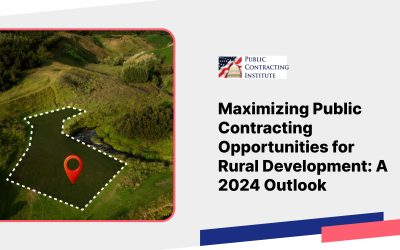Illustrations and Supporting Materials
DESCRIBING YOUR “Need”
The “Statement of Work”; “Performance Work Statement”; “Specification” whatever form selected for the description of the Government’s need, this document is the life force (heart-beat) of the FAR governed contractual arrangement.
Unreservedly, each and every member of the acquisition team, specifically Contracting Officers and their technical representatives, prefer to feel as comfortable with composing, describing, reading, understanding and advertising this feature of the Government’s need as smoothly and authoritatively as they would describe a personal shopping preference, e.g., their own attire. A fully informed and assured contracting professional is a secure contracting professional. To be sure, innovation and commercial practices breed successful contractual relationships and acquisition reform when the Government better understands the need/requirement; similar to a personal shopper.
COMPLEX/SOPHISTICATED TECHNICAL DESCRIPTIONS (e.g., Information Technology Software Design; Scientific Analyses and Application)
However, this sovereign element of the procurement objective is perpetually a work-in-progress, especially, when there is the need to describe specialized requirements and/or the desired outcomes for these requirements.
By their nature, the methodological concepts progressively evolve and must be applied through specialized study and engineered skill, and so these requirements never quite reach the comfortable condition of “off-the-shelf” clarity and accessibility. This fact is especially troublesome for entry grade, journeyman scale, AND expert degree contracting professionals.
While the Federal Acquisition Regulation (FAR) contains the regulated “Federal Acquisition System” to foster best value contractual arrangements, the roles and responsibilities of “Acquisition Team Members” comprise a number of professional and academic disciplines, i.e., Accounting, Business, Finance, Law, Contracts, Purchasing, Economics, Industrial Management, Marketing, quantitative methods, or organization and management, etc.
However, per contract law, the ultimate responsibility for sound business judgement, team member expertise and related best value achievement lies with the Contracting Officer (CO). Specifically, the CO must acquire the advanced knowledge necessary in these disciplines to establish an informed decision to execute the authority vested in the CO, namely, sign the contract document on behalf of the United States. The CO wears many hats in the Federal Acquisition System.
A REMEDY: PLAIN LANGUAGE DESCRIPTIONS
- Government Plain Language Descriptions: Plain language descriptions are translators that present clarity and disclose common and simple meaning and purpose. Descriptions developed using plain language allows both the developer and readers to identify familiarities; discover the true and/or appropriate meaning of single or unique activities in comparison to the sum total goal of an endeavor and, plain language also identifies whether or not best value is offered/proposed to the Government.
Example: A plain language description of the above paragraph:
A description written in plain language explains something clearly or in an uncomplicated way and shows the easy-to-understand meaning and reason for an action. Also, the person who wrote the plain language description and readers will otherwise be able to recognize well-known steps or procedures; learn the real or right reason for separate actions and how they will work to carry out the total performance requirement. Plain language descriptions also help the Government to see if vendors offered the best solutions at a reasonable price.
- Contractor/Vendor Plain Language Technical Proposal Descriptions: How does the Government decide whether best value solutions have been offered in technical proposals that are written in a complex, highly technical manner? First, the Government relies on its technical representatives to evaluate and confirm technical validity and value. But the acquisition team is comprised of many members; most importantly the CO who must understand the technical offer to determine if best value will be achieved AND bind the Government when accepting the arrangement. So then, the Contractor/Vendor too must plainly describe their offer.
It is equally important, advantageous and befitting for the Government to develop descriptions of need written in plain language and for industry to develop technical proposals written in plain language to successfully achieve procurement objectives.
PLAIN LANGUAGE PRESENTATION
The illustration of both the Government’s and industry’s plain language descriptions using an “adjacent” format presentation is effective and advantageous for immediate side-by-side comparisons.
- “Illustration/Type 1” – This illustration includes a Government technical description that is composed primarily of complex professional/technical jargon, but however, does not necessarily require the Government to define the terms/jargon for layman understanding, if, plain language descriptions are developed. Additionally, the benefit of using plain language for a “how to” (specified) requirement and a “desired outcome” (performance-based) work statement requirement is illustrated:
Illustration/Type 1
- “Illustration/Type 2” – This illustration also includes a Government technical description that is composed primarily of complex technical jargon, AND, a number of performance design requirements that require (1) an initial explanation of the terms for layman understanding and (2) more advantageously, the development of plain language descriptions:
Illustration/Type 2
- “Contractor Technical Proposal” – All complex technical proposals include industry jargon. In many cases, offerors intermingle technical terms with common terms in an attempt to provide a clear explanation of an approach, compliance and qualification. However, without the plain language translator, most acquisition team members get lost in the “technical translation”. Like the Government, industry too, should define terms and “plainly” describe proposals because this endeavor additionally reinforces the accuracy of descriptions.
Contractor’s Technical Proposal
Moreover, adjacent presentations of Government work descriptions and industry offers can be presented either horizontally or vertically, as appropriate and alternatively, in worksheet formats.
Plain language descriptions can transform the layman into an expert. Mastering the development of plain language descriptions is quintessential and befitting for the success of a contractual arrangement. To be sure, the author of this article developed the attached illustrations and is a federal contracting professional who has never written Government descriptions of work, but understands the need and value of using plain language work descriptions through experience as a Contracting Officer.
So, should contracting parties plainly state their positions? In line with the guiding principles of FAR 1.102 to “fulfill public policy objectives” plainly stated objectives are solutions and solutions help all parties to be clear.


